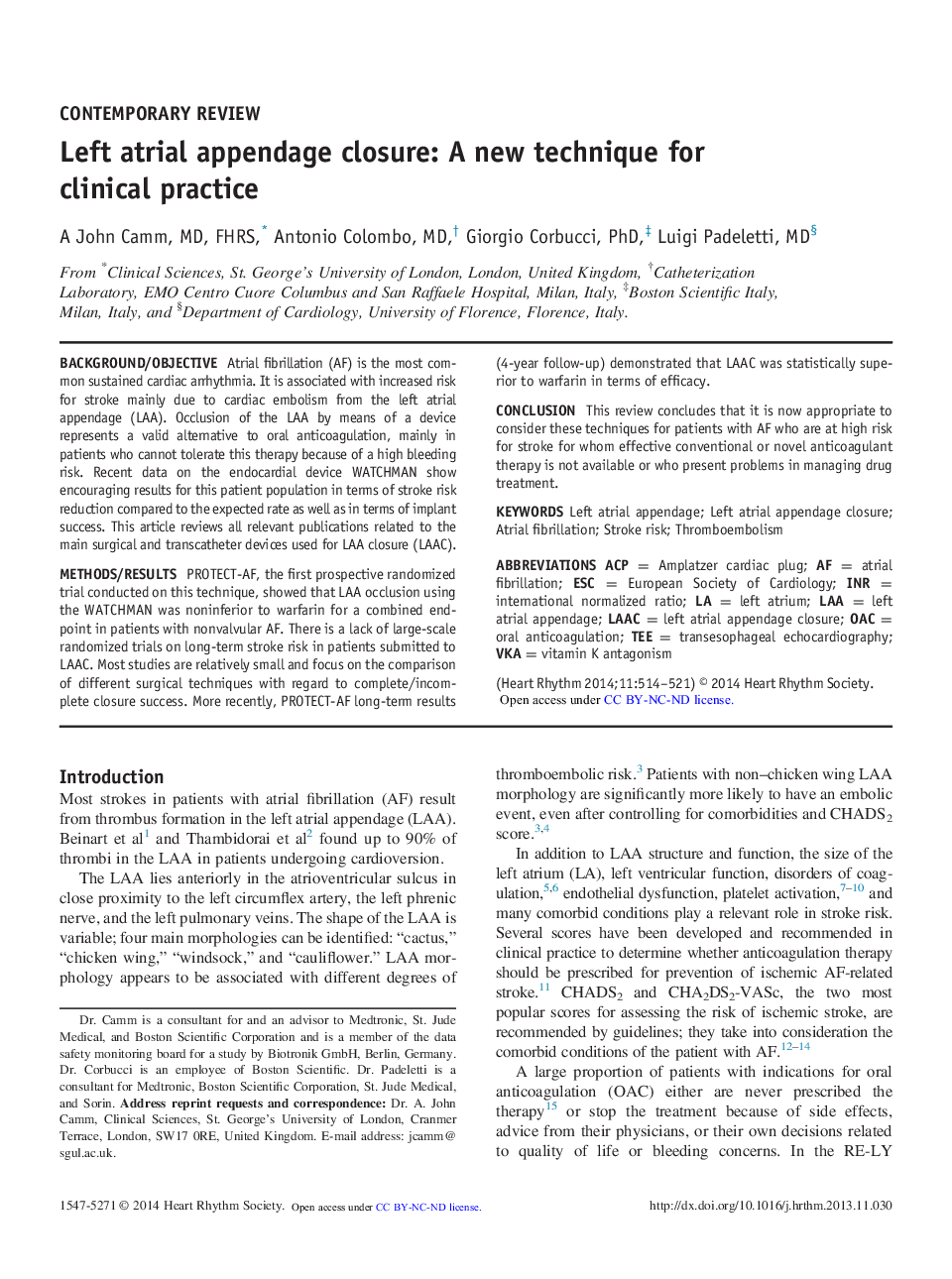| Article ID | Journal | Published Year | Pages | File Type |
|---|---|---|---|---|
| 5961016 | Heart Rhythm | 2014 | 8 Pages |
Background/ObjectiveAtrial fibrillation (AF) is the most common sustained cardiac arrhythmia. It is associated with increased risk for stroke mainly due to cardiac embolism from the left atrial appendage (LAA). Occlusion of the LAA by means of a device represents a valid alternative to oral anticoagulation, mainly in patients who cannot tolerate this therapy because of a high bleeding risk. Recent data on the endocardial device WATCHMAN show encouraging results for this patient population in terms of stroke risk reduction compared to the expected rate as well as in terms of implant success. This article reviews all relevant publications related to the main surgical and transcatheter devices used for LAA closure (LAAC).Methods/ResultsPROTECT-AF, the first prospective randomized trial conducted on this technique, showed that LAA occlusion using the WATCHMAN was noninferior to warfarin for a combined end-point in patients with nonvalvular AF. There is a lack of large-scale randomized trials on long-term stroke risk in patients submitted to LAAC. Most studies are relatively small and focus on the comparison of different surgical techniques with regard to complete/incomplete closure success. More recently, PROTECT-AF long-term results (4-year follow-up) demonstrated that LAAC was statistically superior to warfarin in terms of efficacy.ConclusionThis review concludes that it is now appropriate to consider these techniques for patients with AF who are at high risk for stroke for whom effective conventional or novel anticoagulant therapy is not available or who present problems in managing drug treatment.
